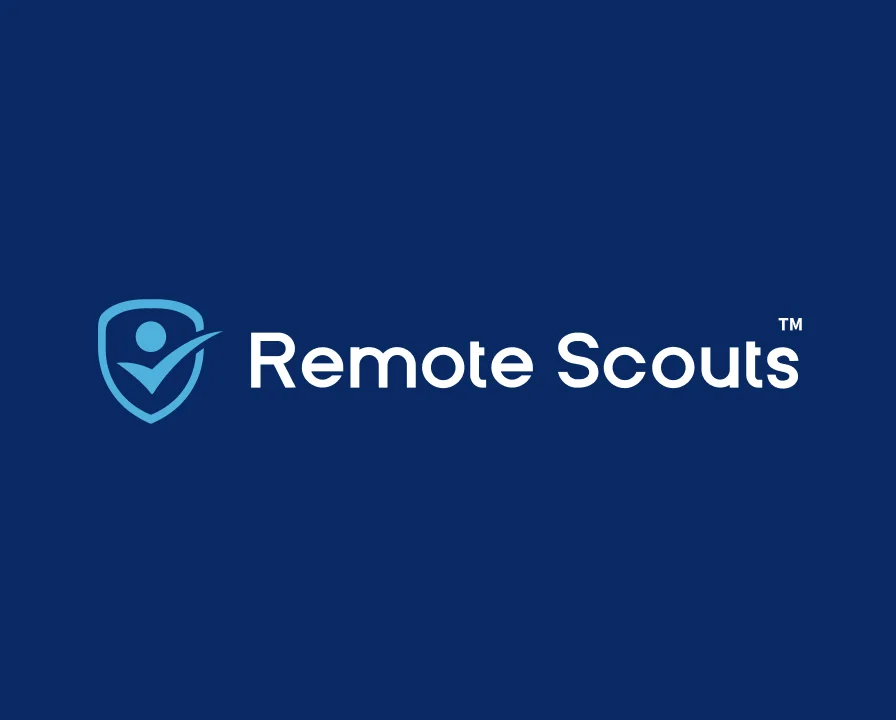
The medical industry is a complex and intricate system that is responsible for the tangible well-being of millions of people in the United States. That means that everyone who relies on the healthcare system also must be documented and processed through a series of processes that are becoming more and more inherent within the healthcare administrative system.
One of the significant factors that require constant attention is the billing of the patients and the revenue generated by medical organizations and their management; this is where revenue cycle management in healthcare comes into play.
Imagine a racetrack where everyone is lined up to cover the various distances completed throughout the track. If you are at the start of it, you will need to prepare yourself for the run, and then keep going until the end line is reached.
This is the kind of system that the healthcare RCM emulates. It is a service that utilizes medical billing software that takes care of the patient care process from A to Z, starting from setting up appointments, all the way to the final payment for the services acquired by the patients.
Understanding Healthcare Revenue Cycle Management Services
There are multiple processes within the revenue cycle management in healthcare, as it follows a continuum of tasks carried out as patient care progresses.
One major aspect is that it coordinates the business side of the healthcare process with the clinical services rendered to the patients. Within the healthcare RCM there are stages that are created for how that service is laid out in the following order:
Scheduling of Patients:
When a patient comes in, the first step is to obtain their history and their data, along with the details of their insurance. This helps streamline the entire process as it goes as collecting this information determines the care that is provided to the customer. RCM systems will collect this data for verification to set up the appointments for the patients.
Verifying Patient Insurance:
It is important to ensure that every patient who walks through the door has valid insurance and can be billed accordingly. Given that many patients struggle to find the right healthcare plan that can help them, insurance verification is crucial.
Certification of Patients:
The healthcare RCM will determine the patient’s standing in terms of their insurance and their healthcare plan. Through this service, the system ensures that patients have the all-clear for certain procedures and services from their insurance companies.
Registration of Patients:
This process determines the patient information; the treatment they need, their medical history, their insurance status, and the kind of healthcare plan they should be on, this is where the information is consolidated for their proper treatment course.
Charge Capture:
When a patient comes in for treatment, this aspect of the healthcare RCM ensures that their
services are developed into billable charges so that the record is maintained for the treatment that is provided.
Generating Claims for Patients:
It is essential that every patient who comes in for treatment has a sound system in place to afford and accommodate their healthcare plan. That is of course done through their insurance plan and indicates what their healthcare plan will look like. It is part of the revenue cycle management in healthcare that all claims are properly generated and processed through coding methods to ensure that the payers are given the claims for reimbursement.
Counseling for Patient Finances:
All kinds of people walk into medical organizations seeking treatment. It is important to understand that they will each have a specific struggle with their finances when paying for their healthcare services. This system ensures that patients are made aware of their financial standing in obtaining the healthcare services they need, and their affairs are in order.
The Healthcare RCM Process
Once you approach a medical organization to take care of your health, there are multiple processes that are pushed into play. There are multiple factors that determine how you will be catered to and in which order.
- First off, you will be charged for the medical services that you have received through the system which will help you streamline the kind of treatment you will get; this is the Charge Capture process.
- Then comes an important part of your billing process, which is Claim submission, here your billable fees for the treatment you are getting will be submitted to insurance companies for auditing, or observation to assess if your insurance is valid for reimbursement for the treatment you are getting.
- Next up is a complex process that must be completed with the utmost care, which is coding the diagnosis that you will receive and the subsequent procedures that will entail as you go through them. Coding is essential in determining the right kind of diagnosis that you get and maintaining a sense of efficacy in your treatment.
- To render the right kind of services to the patient, it is imperative that their balances are checked out and you know how much a patient’s balance is for their bills to be collected and processed. So Patient Collection will determine this process and collect the necessary payments that are due from the patients.
- Pre-registration for a patient is where the caregiving organization prepares to take in a patient and complete the necessary fact-checking, cross-checking, and acquisition of the patient information, including their insurance status, their medical history, and their treatment plan before the patient comes in.
- Subsequently, Patient Registration would be a real-time process where the patient’s history and relevant information will be collected when they come in to determine the kind of treatment they will be provided with and how.
- Third Party follow-up is an incredibly important aspect of revenue cycle management where collections from third-party insurers will be made to ensure all payments are processed and collected.
- Follow this up with a rather fundamental aspect of revenue cycle management, which is the Utilization Review where the system investigates the importance of the medical services that have been rendered to the patients and their efficacy.
What Are the Revenue Cycle Management Healthcare Challenges
When handling something as complicated and sensitive as a healthcare RCM process, each part of the process must be dedicatedly observed and carried out to avoid the major issue, which is loss of revenue. In keeping with the various procedures involved in revenue cycle management, it is important to look out for some potential risks that can arise and how to avoid them.
- It is essential that the appropriate level of revenue is generated and collected by following a proper process of collection. If the charge entry fee is not logged properly with the right diagnosis and coding for the claim, it can cause a potential loss of revenue.
- If there is an issue with patient access, where patients’ information and their scheduling are not streamlined digitally, they will face issues in following through with their appointments and their treatment. A common issue that can arise if companies do not digitize their patient scheduling online, which can lead to delays in accessing their treatment and updates about their treatment conveniently.
- One of the most common challenges that are faced within this process is the periodic evaluation of regulatory standards. If periodic evaluation is not carried out for customer information, there could be a threat to the patient’s data and that can cause long-term issues for any medical company.
- If there is a way that the Accounts Receivable days can be kept to a minimum, it can help maintain the revenue flow that is coming in. Otherwise, if a company exceeds its minimum days for accounts receivable, you are looking at a potential spot for revenue loss.
- Maintaining a good communication system between medical practitioners and financial staff is crucial to maintaining good revenue cycle management. If there’s proper communication and ample back and forth between the two entities, potential risks to revenue can be mitigated and preemptively avoided as well.
Selecting the Right Healthcare Revenue Cycle Management Solutions
When looking for a proper healthcare revenue cycle management solution, it is important that you look for a system that can incorporate and implement technological tools that can optimize your revenue processes. You should prioritize the improvement of revenue collection first and foremost, see a collection that enhances efficacy for revenue collection, and ensure compliance for both patients and organizations that employ the RCM system.
The most important aspect is following the proper cycle that is required to finish the revenue cycle, if you are implementing the right steps towards achieving financial transparency within your processes, your revenue management will also reflect that accuracy. Adherence to the revenue cycle will ensure that your organization maintains are healthy revenue management system.
Relevant Service Pages
FAQs
What people are saying
 Michael Stein, M.B.A
Michael Stein, M.B.A
Connection Marketing, Inc.
Finding high-level technical talent in digital marketing is always a challenge. Remote Scouts has solved that. They have been an invaluable partner for our business, providing top-tier digital marketing support across Meta, Google, and other platforms. Their team is not only highly skilled and dependable but has also integrated seamlessly with our company culture and processes. Their ability to adapt quickly and deliver consistently high-quality results has made them an essential part of our operations.
Michael Stein, M.B.A
Connection Marketing, Inc.
 Lisa Rung
Lisa Rung
PFS Billing/Coding Manager
I want to express my strong recommendation for Remote Scouts, particularly for their exceptional medical billing staffing services. They consistently provided top-quality candidates for our medical billing needs promptly and have significantly improved our team’s capabilities. Their expertise, responsiveness, and dedication to results makes them an invaluable partner.
Lisa Rung
PFS Billing/Coding Manager
Glenwood Medical Associates

Billing Manager
I’ve had the pleasure of working with Remote Scouts for my staffing needs, and they’ve truly impressed me. Their personalized approach, top-notch candidates, and stellar communication set them apart. They deliver quality hires while staying within budget. If you need reliable staffing solutions, Remote Scouts is the way to go!
Nicole Jimenez
Billing Manager
Regain Medical Billing
 Bejan Broukhim
Bejan Broukhim
CEO/President
I want to express my complete satisfaction with the services provided by Remote Scouts. I’ve worked with Remote Scouts to hire remote professionals for various roles within our organization. I’ve hired bookkeepers, and a social media marketer through Remote Scouts, and their performance has been extraordinary. They seamlessly integrated into our team, consistently delivering exceptional results.
Remote Scouts’ efficient recruitment process and commitment to finding the right talent have significantly helped us meet our business goals. We look forward to a long and productive partnership with them.
Bejan Broukhim
CEO/President
Nordic Plains, Inc.
 Mark Steik
Mark Steik
General Collection Company, Inc.
We have been using their service for two months and are very happy with them. The collectors are very well-informed in collection law. Their employees are very professional and are hard working collectors. They stick to the task at hand. make calls and get money collected. I will recommend them to any collection agency. You will be happy with your results.
Mark Steik
General Collection Company, Inc.
 Alan Fassonaki,
Alan Fassonaki,
CEO
Consistently impressed by the caliber of professionals introduced by Remote Scouts. We appreciate the diligence in selecting candidates who not only meet but exceed our expectations by consistently delivering high-quality legal talent.
Alan Fassonaki
CEO
Fassonaki Law Firm
 Bejan Broukhim
Bejan Broukhim
CEO/President
I want to express my complete satisfaction with the services provided by Remote Scouts. I’ve worked with Remote Scouts to hire remote professionals for various roles within our organization. I’ve hired bookkeepers, and a social media marketer through Remote Scouts, and their performance has been extraordinary. They seamlessly integrated into our team, consistently delivering exceptional results.
Remote Scouts’ efficient recruitment process and commitment to finding the right talent have significantly helped us meet our business goals. We look forward to a long and productive partnership with them.
Bejan Broukhim
CEO/President
Nordic Plains, Inc.
 Jonathan Hindes
Jonathan Hindes
Chief of Operations
It is my pleasure to recommend Remote Scouts for their services. I have worked with them closely during the transition of a handful of fully remote workers has been almost flawless. I have worked with other staffing agencies previously and I can state that, without a doubt, Remote Scouts has been the easiest I have ever done business with. Their training is very thorough, we have yet to see any of their representatives violate collections compliance. I would highly recommend them to anyone needing reliable staffing, quickly.
Jonathan Hindes
Chief of Operations
ACS Inc
 Adam Pearlman,
Adam Pearlman,
COO
I am writing to endorse Remote Scouts and their exceptional staffing services. In my role as Chief Operating Officer at ARM Solutions, I have closely collaborated with Remote Scouts to meet our staffing needs, and I am pleased to attest to their consistent delivery of high-quality and professional services. Remote Scouts consistently provides top-tier candidates across various roles, including debt collectors, accounts receivables, sales & marketing, and more. Their extensive network and stringent vetting process ensure that the candidates presented not only meet but exceed our expectations, consistently setting a high standard of excellence. I strongly recommend Remote Scouts to any organization seeking staffing solutions.
Adam Pearlman
COO
A.R.M. Solutions








